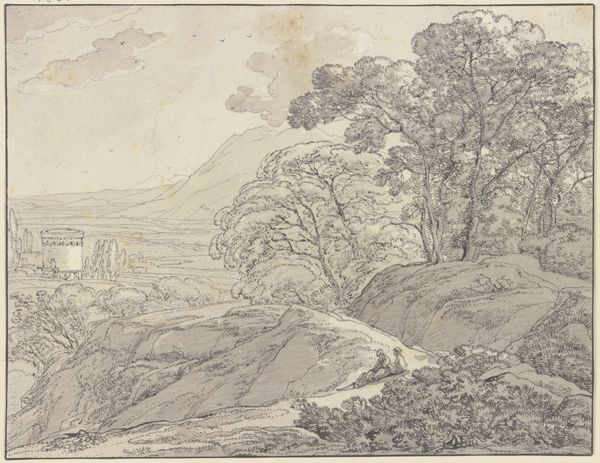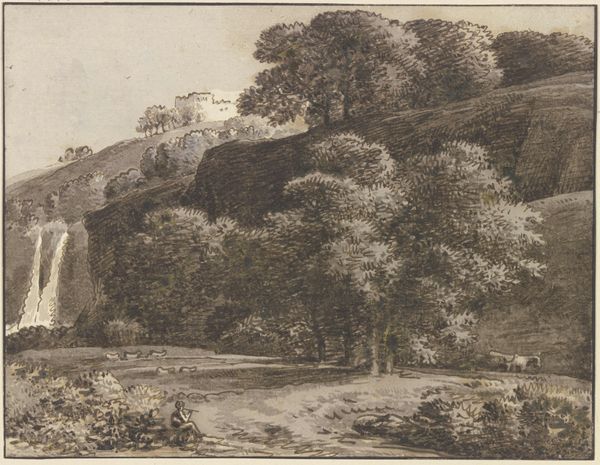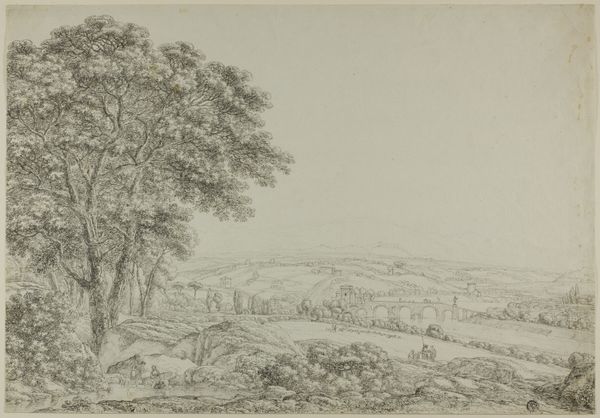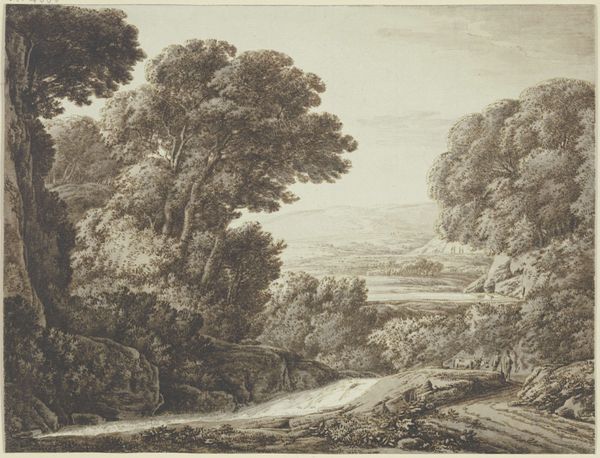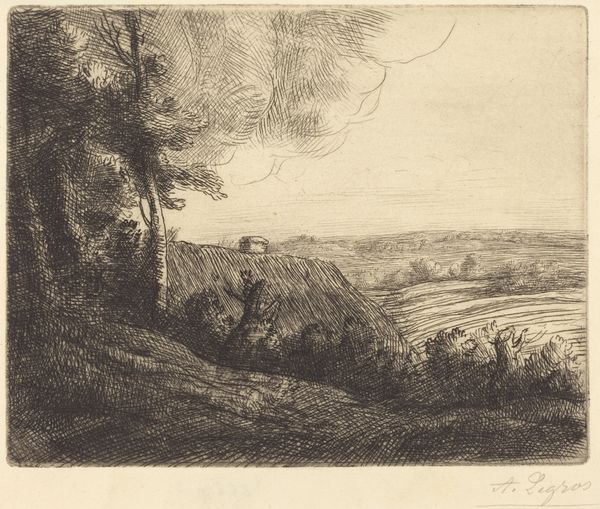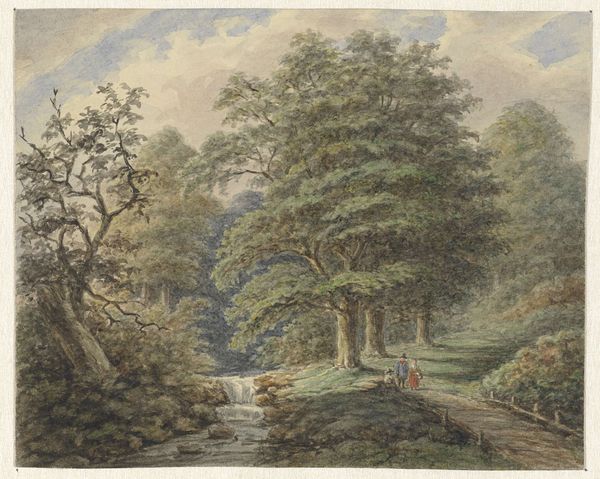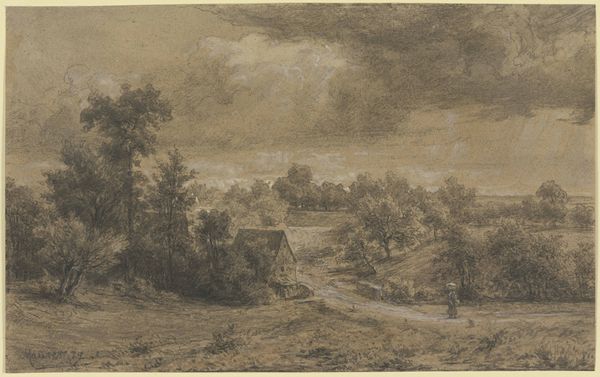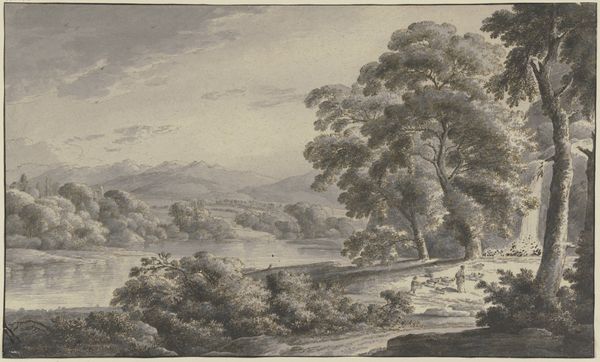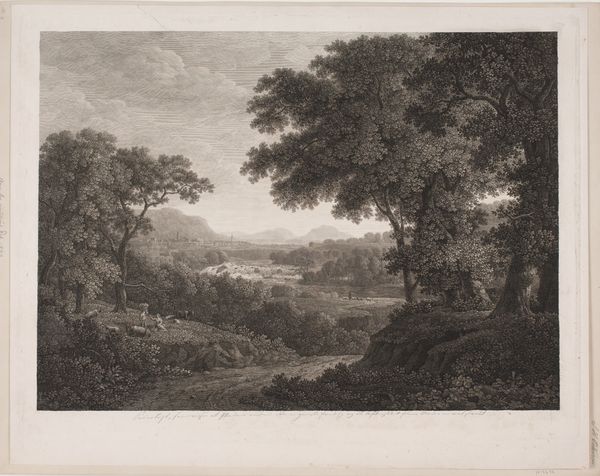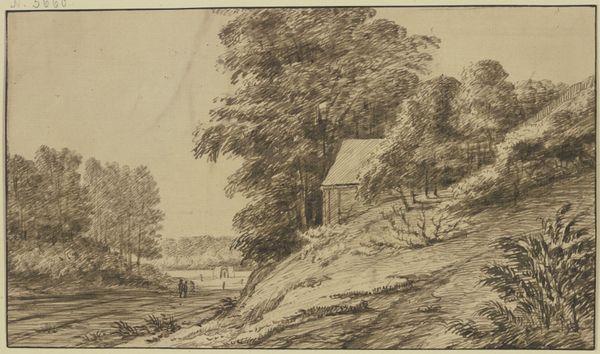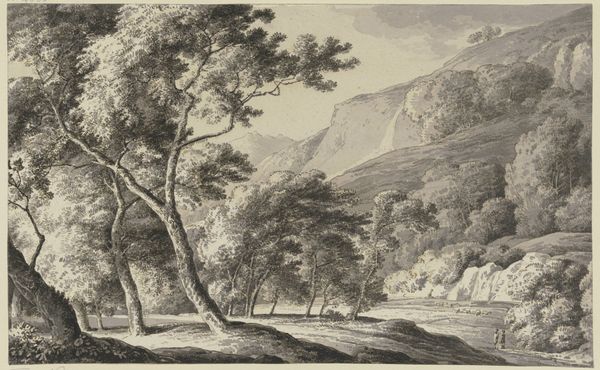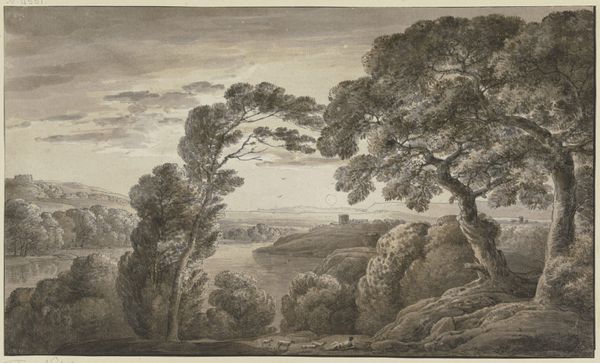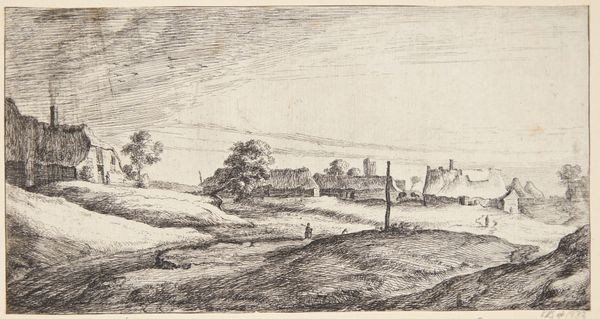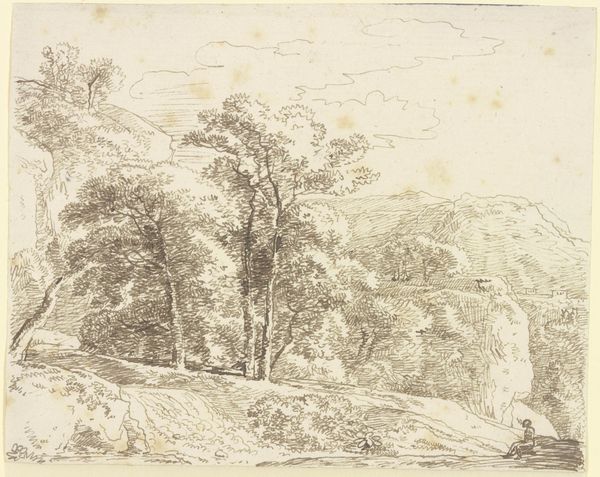
Copyright: Public domain
Curator: Looking at this canvas by Thomas Jones, completed in 1776, titled "Carneddau Mountains from Pencerrig", one can immediately sense the influence of plein-air painting and early Romanticism. Editor: A landscape veiled in a somber, almost melancholy mood, wouldn't you agree? The muted greens and greys lend a kind of stoic weight to the scene, yet also a serene quietness. Curator: Yes, the atmosphere is striking. Consider, however, the production. Jones would have been directly engaging with the physical landscape. The very act of transporting his materials – canvas, oils – speaks to a developing interest in direct, almost scientific, observation. A landscape as material record, rather than idealized invention. Editor: I see that. Yet the arrangement is key. Note the ascending composition, leading the eye towards the hazy mountaintops. Mountains are perennial symbols of the sublime, of spiritual aspiration. The muted colors heighten that sense of yearning. The mountain represents obstacles and opportunities and speaks to me of a time of both industry and nature working in balance. Curator: A balance certainly exists in the making. Think of the oil paint itself – ground pigments, linseed oil… a combination of earth’s resources and human labor, refined and applied to canvas. It underscores how art itself relies on networks of extraction and making, mirroring in some ways, the landscape depicted, the careful arrangement of the crops and landscape within it. Editor: A network is correct, but in a more meaningful way. These were hard times for farming, often rife with bad harvests and little support from governing powers. He includes that story by placing this as the grounding from which his peak rises from. It almost gives context to the quiet suffering that happened daily. Curator: So you read the muted palette as more directly symbolic? I'm interested in this balance between human shaping and raw natural forms he renders. This kind of early landscape is really about claiming land, mapping it for further consumption as much as pure awe. Editor: Perhaps we find both intentions here: one looking back and the other one, towards the promise of what might be ahead, wrapped within layers of meaning, reflecting how landscapes contain echoes of cultural memory, informing how we interact with nature today. Curator: I think it's so fascinating that paintings like this remind us about art-making and are the foundation from which the artist builds something worth experiencing and pondering, today. Editor: And, by observing the symbols, we find historical clues about land and progress.
Comments
No comments
Be the first to comment and join the conversation on the ultimate creative platform.
